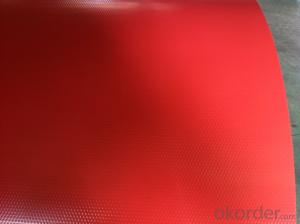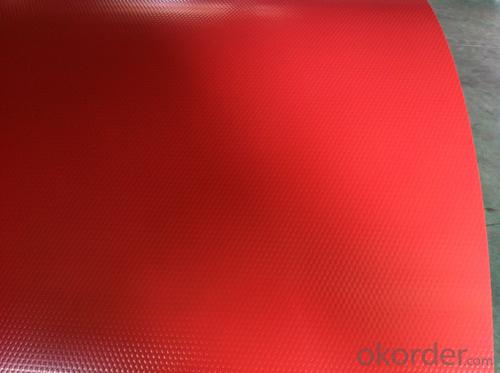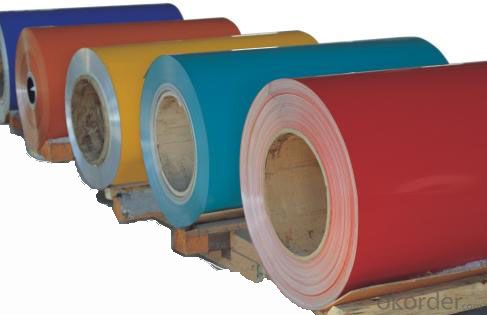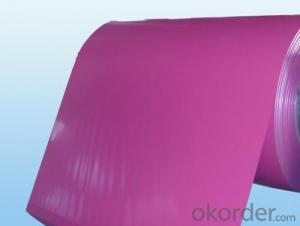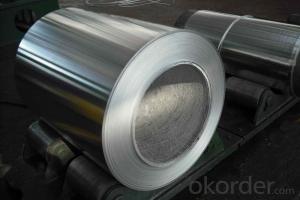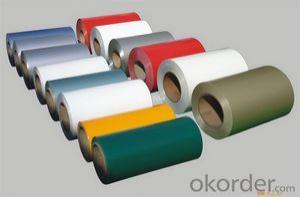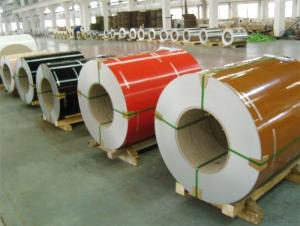Menards Aluminum Sheets - Prepainted Aluminum Coils Wooden Rain Style AA3003
- Loading Port:
- Shanghai
- Payment Terms:
- TT OR LC
- Min Order Qty:
- 5 m.t.
- Supply Capability:
- 60000 m.t./month
OKorder Service Pledge
OKorder Financial Service
You Might Also Like
Specification
1.Structure of Wooden Rain Coated Aluminium Coils
PE Coated aluminium coils are widly used in decoration field. For the painting, it depends on the using evironment. If you use in the open air, we recommend the PVDF coated aluminium coils. This kind of painting can last 15-20 years. If you use in the room, we recommend PE coated aluminium coils. The price is much more competitive.
2. Main features of Wooden Rain Coated Aluminium Coils
a.Competitive price---We have our own mills and can produce mill finished aluminium coils, so we can control the production cost better.
b.Professional after-sale service---We have more than 15 years exportation experience and you need not worry about the exporation problems.
c.Fast delivery time---We can control the delivery time within 35 days.
3. Image
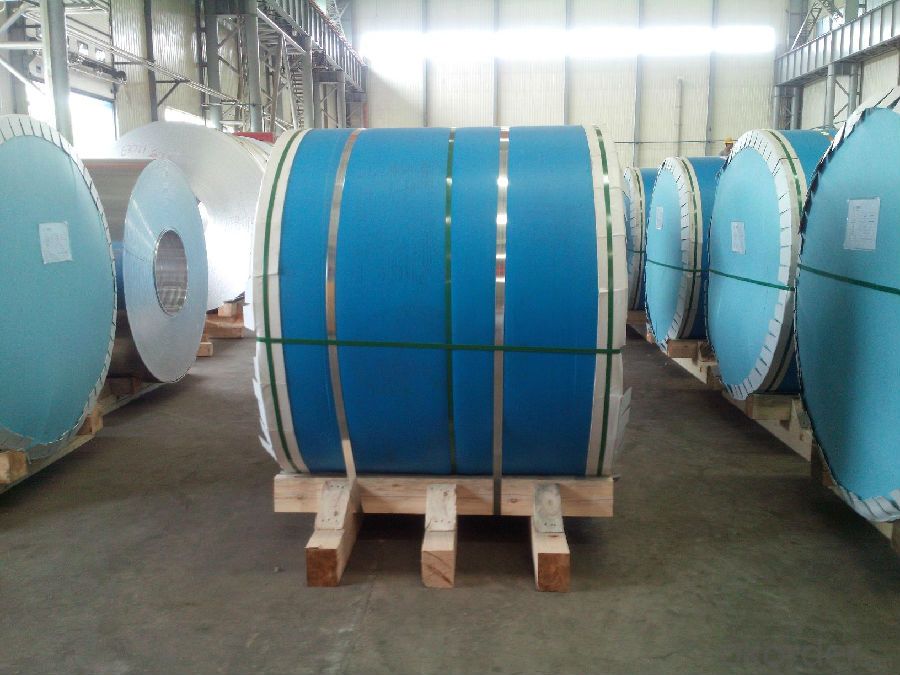
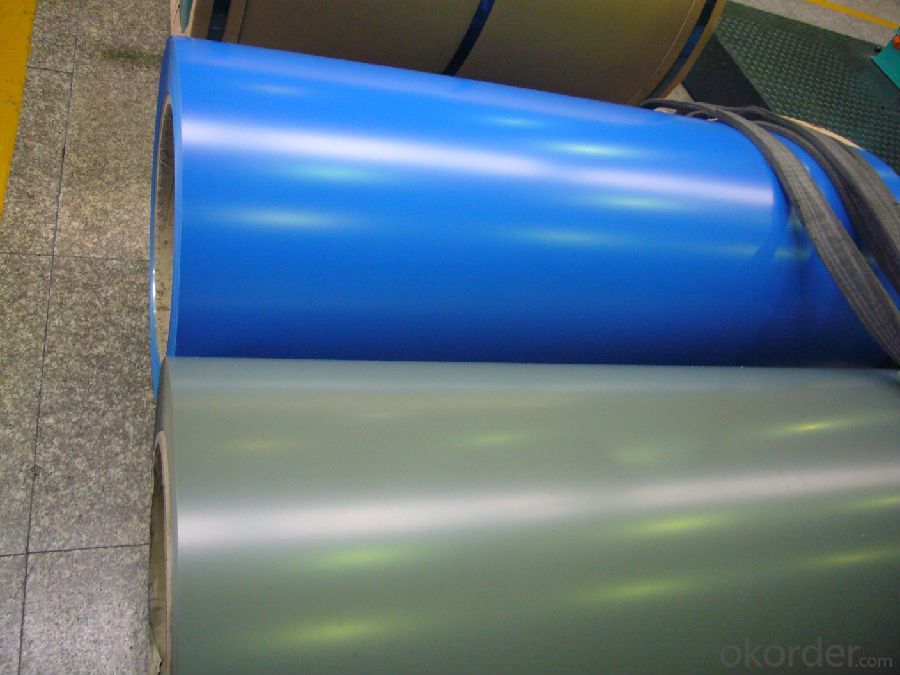
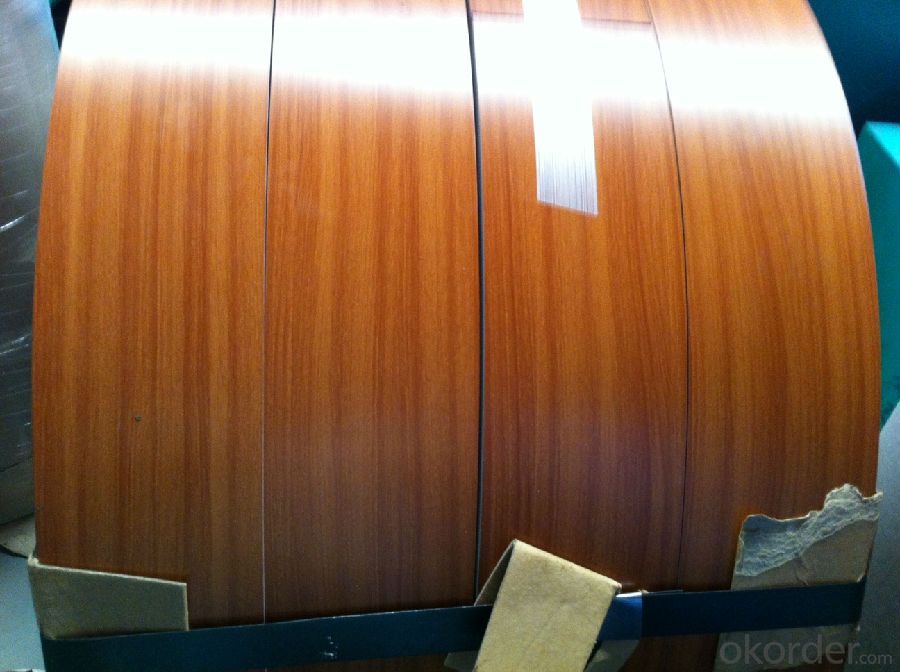
4. Product Specification
| ALLOY | Temper | Thickness | Width | Weight |
| AA3003 | H14 | 0.2mm-3mm | 1200MM-1800MM | Min 5 tons |
5.FAQ:
What is the quality standard?
---Usually our standard is GB3880-2006
What is the largest width?
---It is 2300mm
What is the MOQ?
---Usually we can accept 80 tons.
- Q: is general aluminum sheet fire-proof?
- aluminum is a kind of silver white metal,melting point:660.4℃, boiling point: 2467℃,density: 2.70 g/cm?,very light, about 1/4 of iron's density.it has low hardness and good ductility, which makes it suitable for being pulled into threadlets or pressed into aluminum foils, and the later is usually used for packaging candy and cigarette. it has good electrical and temperature conductivity. it's used for the manufacture of electric wire and cable in electric power industry, and for the manufacture of cooker in daily life bined with the magnesium,copper,zinc,tin,manganese,chromium,zirconium,silicon and other elments,it can formulate various alloys that is broadly used for the manufacture of airplane,car,ship, materials of daily living equipment and the doors and windows of construction industry.aluminum is one of the best reflectors of heat and light, so it is used as thermal insulation material and the manufacture of reflecting mirror in the reflecting telescope.now, what do you think about it? the answer is certainly nonfireproof.
- Q: Are aluminum sheets resistant to vibration?
- Yes, aluminum sheets are generally resistant to vibration. Aluminum is a lightweight and flexible material that has good damping properties, meaning it can absorb and dissipate vibrations. Additionally, aluminum has a high strength-to-weight ratio, which allows it to retain its structural integrity even when subjected to vibrations. This makes aluminum sheets a popular choice in industries such as aerospace, automotive, and construction, where vibration resistance is important. However, it is worth noting that the specific resistance to vibration may vary depending on factors such as the thickness and alloy of the aluminum sheet, as well as the intensity and frequency of the vibrations.
- Q: Is aluminum a metal or a non-metal?
- Aluminum, a metal, holds the chemical element designation Al along with atomic number 13. Its categorization as a metal stems from its distinctive physical and chemical traits. The characteristics of aluminum include its display of a metallic luster, its ability to conduct heat and electricity, and its possession of considerable tensile strength. Moreover, aluminum is known for its malleability and ductility, enabling it to be effortlessly shaped into various forms. Furthermore, aluminum is typically observed in a solid state when subjected to room temperature, a trait commonly associated with metals. Consequently, aluminum is deemed a metal based on its properties and its placement within the periodic table.
- Q: What are the environmental benefits of using aluminum sheets?
- There are several environmental benefits associated with using aluminum sheets. Firstly, aluminum is a highly recyclable material, meaning that it can be recycled repeatedly without losing its quality or properties. This reduces the need for mining and extraction of new aluminum ore, which can contribute to deforestation, habitat destruction, and water and air pollution. Recycling aluminum sheets also requires significantly less energy compared to producing new ones, resulting in reduced greenhouse gas emissions and a smaller carbon footprint. Additionally, aluminum sheets are lightweight, which makes them a more sustainable alternative to other materials such as steel or plastic. The use of aluminum sheets in various industries, such as automotive and aerospace, can help reduce the overall weight of vehicles and aircraft, leading to improved fuel efficiency and lower emissions. This is particularly important in the context of climate change and the need to reduce our dependence on fossil fuels. Furthermore, aluminum is corrosion-resistant, durable, and long-lasting, making it a sustainable choice for various applications. Its durability reduces the need for frequent replacements, thereby reducing waste generation. Moreover, aluminum sheets can be used in construction to improve insulation, leading to energy savings and reduced greenhouse gas emissions. Lastly, aluminum is non-toxic and does not release harmful pollutants during its production or use. This makes it a safe material choice for various applications, including food packaging and medical equipment. In summary, the environmental benefits of using aluminum sheets include its recyclability, lightweight nature, energy efficiency, durability, and non-toxicity. By choosing aluminum sheets over other materials, we can contribute to reducing resource extraction, energy consumption, greenhouse gas emissions, and waste generation, while promoting a more sustainable and environmentally friendly future.
- Q: This question asks about the various color options available for aluminum sheets.
- <p>Aluminum sheets are available in a wide range of colors to suit various applications and aesthetic preferences. Common colors include silver (anodized), white, black, and clear (natural). Beyond these, there are also options for colors like red, blue, green, and yellow. Some manufacturers offer custom color matching services for specific projects. Additionally, aluminum sheets can be coated with various finishes such as matte, gloss, or textured, further expanding the color and appearance options. It's important to check with specific suppliers for their available color range as it can vary.</p>
- Q: The real bumper/ reinforcement bar that is behind the plastic bumpers. Magnet don't stick to it and it don't rust which both types of metal are pretty much like that.
- Aluminum, stainless is too expensive and not ductile enough to be made into bumpers, especially of that complexity. As far as the magnetism, the magnet would only stick to low nickel stainless and its not likely that they would use 308 on a consumer vehicle.
- Q: Can aluminum sheet be used for electrical conductivity applications?
- Yes, aluminum sheet can be used for electrical conductivity applications. Aluminum has good electrical conductivity properties, making it suitable for various electrical applications such as wiring, connectors, and conductive components.
- Q: How does aluminum sheet perform in corrosive environments?
- Aluminum sheet performs exceptionally well in corrosive environments due to its inherent corrosion resistance. When exposed to moisture or various chemicals, aluminum forms a protective oxide layer that prevents further corrosion. This makes it a preferred choice for applications where resistance to corrosion is crucial, such as marine environments, chemical processing plants, and outdoor structures.
- Q: Are aluminum sheets conductive?
- Yes, aluminum sheets are conductive. Aluminum is a metal and has a high electrical conductivity. This means that electricity can easily flow through aluminum sheets, allowing them to be used in various applications where conductivity is required, such as in electrical wiring, power transmission lines, and electronic devices.
- Q: How does aluminum sheet perform in extreme temperatures?
- Due to its unique properties, aluminum sheet exhibits exceptional performance in extreme temperatures. One of its key advantages is its remarkable thermal conductivity, enabling it to efficiently transfer heat. This characteristic allows aluminum sheet to quickly adapt to extreme temperatures, preventing the occurrence of warping or cracking that may be experienced with other materials. Moreover, aluminum possesses a high melting point of approximately 660 degrees Celsius, rendering it highly suitable for usage in high-temperature environments. It remains structurally stable, retaining its strength and integrity even when subjected to intense heat. Additionally, aluminum exhibits a low coefficient of thermal expansion, resulting in minimal expansion and contraction in response to temperature fluctuations. This particular attribute enables aluminum sheet to maintain its shape and dimensions even when exposed to drastic temperature changes. Furthermore, aluminum showcases exceptional corrosion resistance, further augmented by the formation of a natural oxide layer on its surface. This oxide layer serves as a protective barrier against chemical reactions, safeguarding the aluminum from deterioration even in harsh environments or extreme temperatures. In conclusion, aluminum sheet demonstrates outstanding performance in extreme temperatures due to its high thermal conductivity, high melting point, low coefficient of thermal expansion, and excellent corrosion resistance. These properties establish it as a reliable choice for a multitude of applications, including the aerospace, automotive, and industrial sectors, where the ability to perform under extreme temperatures is of utmost importance.
Send your message to us
Menards Aluminum Sheets - Prepainted Aluminum Coils Wooden Rain Style AA3003
- Loading Port:
- Shanghai
- Payment Terms:
- TT OR LC
- Min Order Qty:
- 5 m.t.
- Supply Capability:
- 60000 m.t./month
OKorder Service Pledge
OKorder Financial Service
Similar products
Hot products
Hot Searches
Related keywords
